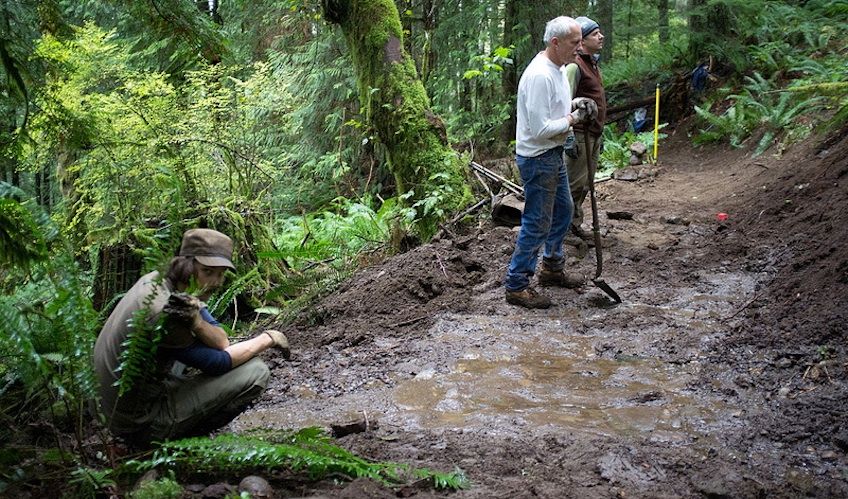Trail Etiquette: What’s Worse than a Winter Rut? Making one.
In the midst the winter riding season it’s a good time to remember the difference between wet riding and rut riding.
If you’re a Western Washington rider the winter season means rain, saying goodbye to cotton and short sleeves, and hello to fenders and shoe warmers. It means riding wet—both from rain above and the trail below.
 “We’re designing trails that are great for year-round NW riding, which means dealing with wet weather,” says Evergreen’s Trail Director Mike Westra “a well-built trail drains water and stays relatively puddle-free so that you’re really riding down damp, compact mineral soil. “
“We’re designing trails that are great for year-round NW riding, which means dealing with wet weather,” says Evergreen’s Trail Director Mike Westra “a well-built trail drains water and stays relatively puddle-free so that you’re really riding down damp, compact mineral soil. “
“But as well as we can design, most trails still really can’t handle those 50-year rain events that dump multiple inches in a day.” he adds. “In those cases it’s good to give them a day or so to recoup.”
If standing water saturates soils enough it can become a muddy mess—and when that happens trail users of all types can start causing damage. For mountain bikers that means tires can begin rutting the soil, chewing up corners, and making a lot more work for trails crew come spring.
“We know people love to ride,” says Westra “but trail crews and volunteers work really hard to maintain these trails, so if you see that you’re harming a particular trail try to bail out and take a different one down.”
It may be difficult to turn around, but remember your fellow mountain bikers have dedicated their time and effort to making a great trail for everyone to enjoy. Consider looking for rides that handle winter biking better, and remember that this way the trail will be ready to ride when the conditions improve.
Check out a few good winter rides for NW Washington.

